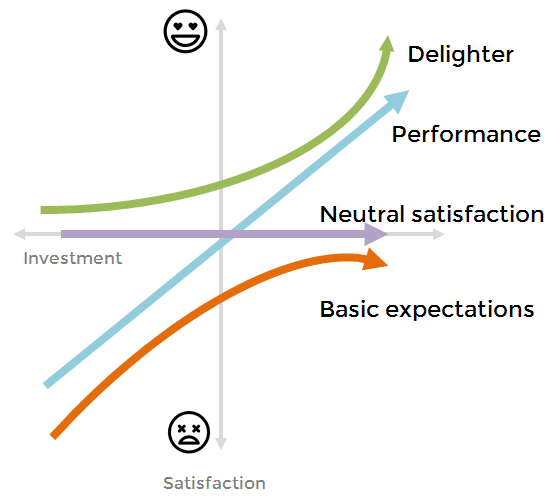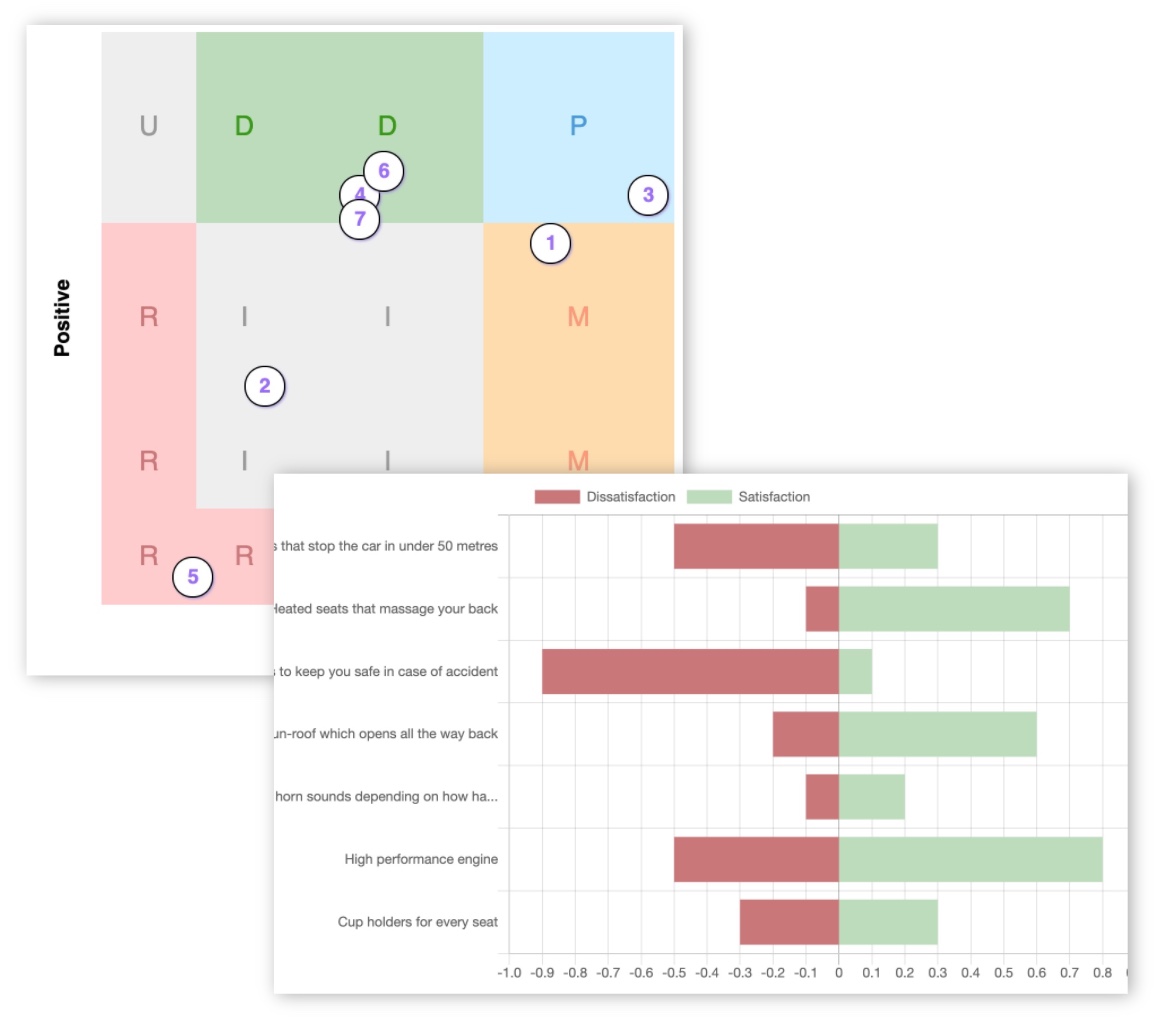What is the Kano Model?
In this article you'll learn about the Kano model and how it works.

Source: medium.com
What is Kano? Well, The Kano model is a user research technique developed in the 1980s by Professor Noriaki Kano, to help people understand what their users really think about the different features in their product.
By understanding better how your users feel and think about the features, you can prioritise improvements and create a truly delightful product that fully meets the needs of your users.
Features are grouped into 5 categories:
Must-have - sometimes called "basic expectations" or "must-be", features that customers just expect to be present (if it's not there, people will be upset but it if *is* there they won't be extra pleased about it). For example, brakes or a steering wheel on a car.
Performance - sometimes called "linear" or "one-dimensional", features where customer satisfaction increases in line with the quality or performance of the feature (the better it is, the more people like it). For example, the car's engine power.
Delighters - sometimes called "attractive", these are things that people don't expect but if they are there then people are surprised and delighted to see them. For example, heated or massage seats in the car.
Indifferent - sometimes called "neutral", these features don't get a strong reaction and people don't really care if they exist or not. For example, the signature of the car's designer inscribed on the engine.
Reverse - these features are actively disliked by customers so their satisfaction will go down if the feature is present (this one isn't plotted on the graph you can see). For example, disco lights and a mirror-ball inside the car.
The graph above shows these categories visualised along two axes - one showing how much effort or investment you put into designing and building the feature, and one axis showing how much customer satisfaction that feature brings.
What can I use Kano for?
The Kano model technique can be applied in a couple of key ways:
Roadmap prioritisation - let's say you've got a bunch of new features you want to build but you're not sure what order to build them in, and you're not sure which one is most important to customers. The Kano model will give you crystal clear insight on how customers feel about those features and you can then prioritise your roadmap with confidence.
Perception over time - features that start off as Delighters gradually move to being Basic Expectations. Sticking with the car analogy, airbags or parking sensors were once a novelty and are now must-haves. Running the Kano model on a regular cycle with existing features can show you how perception shifts as users become accustomed to the feature set of your product; and when the novelty wears off they might start looking elsewhere if you don't provide them something new!
Ultimately this is about understand your users - what makes them tick, what are their expectations and what would really excite them. With Kano you can go beyond just simple satisfaction and start delighting your users.
How does Kano work?
> Pick your features
First you pick the list of features you want to test. These could be features that already exist in your product, or new features you have ideas for. Here's an example, sticking with the car metaphor:
- Velvet seatbelts for maximum comfort (new feature)
- Built-in air freshener so your car smells good all year round (new feature)
- Anti-skid brakes to increase safety in wet conditions (existing feature)
We recommend picking 10 or less to start with. No-one would like to fill in a survey with 50+ questions in it!
> Run a survey
Next you craft a survey questionnaire. For each feature you want to test, you ask 2 questions. One positive, one negative. This is a very special format of question and the heart of the Kano technique.
Survey participants can respond to each question on a scale to show their level of expectation and satisfaction with that feature. Here's an example:
-
How would you feel if the feature was present? (this is the positive question)
- I like it
- I expect it
- I am neutral
- I can tolerate it
- I dislike it
-
How would you feel if the feature was NOT present? (this is the negative question)
- I like it
- I expect it
- I am neutral
- I can tolerate it
- I dislike it
> Analyse the results
Once you have enough survey responses you can start categorising each feature according to the 5 categories described above. There is a mapping table that shows which combination of answers leads to which category, check out our interactive Kano categories tool.
For example, if the participant answers "I expect it" to the positive question and "I dislike it" to the negative question, then the feature is a Must-have.
Another example, if the participant answers "I like it" to the positive question and "I expect it" to the negative question, then the feature is a Delighter.
Something to bear in mind - if you ask 10 people about the same feature they'll have different opinions about it. Some will treat it as a Must-have, some as a Delighter. That's why it helps to have a larger number of responses so you can see what the majority think.
More info on Kano analysis techniques.
> Feed into your roadmap
Now you have some solid new insight - you know which features your customers expect, which ones need to be executed to a high level of quality to be enjoyed, and which ones will truly delight them. So you can prioritise your roadmap accordingly.
Don't just build all the Must-haves though, then your product won't be very exciting. Similarly, don't just build all the Delighters or your product won't meet your customers' basic expectations.
Learn more about using the Kano model to prioritise your roadmap.
How do I get started with Kano?
The survey and analysis parts of applying the Kano model can be a bit long winded. It's possible to do all this using a combination of a generic survey tool and a bit of spreadsheet magic, but it's much easier to use a dedicated Kano tool - like KanoSurveys.com!
Create a free account now or Log in if you already have one. You can create and publish your first survey in minutes.

 Give Feedback
Give Feedback
